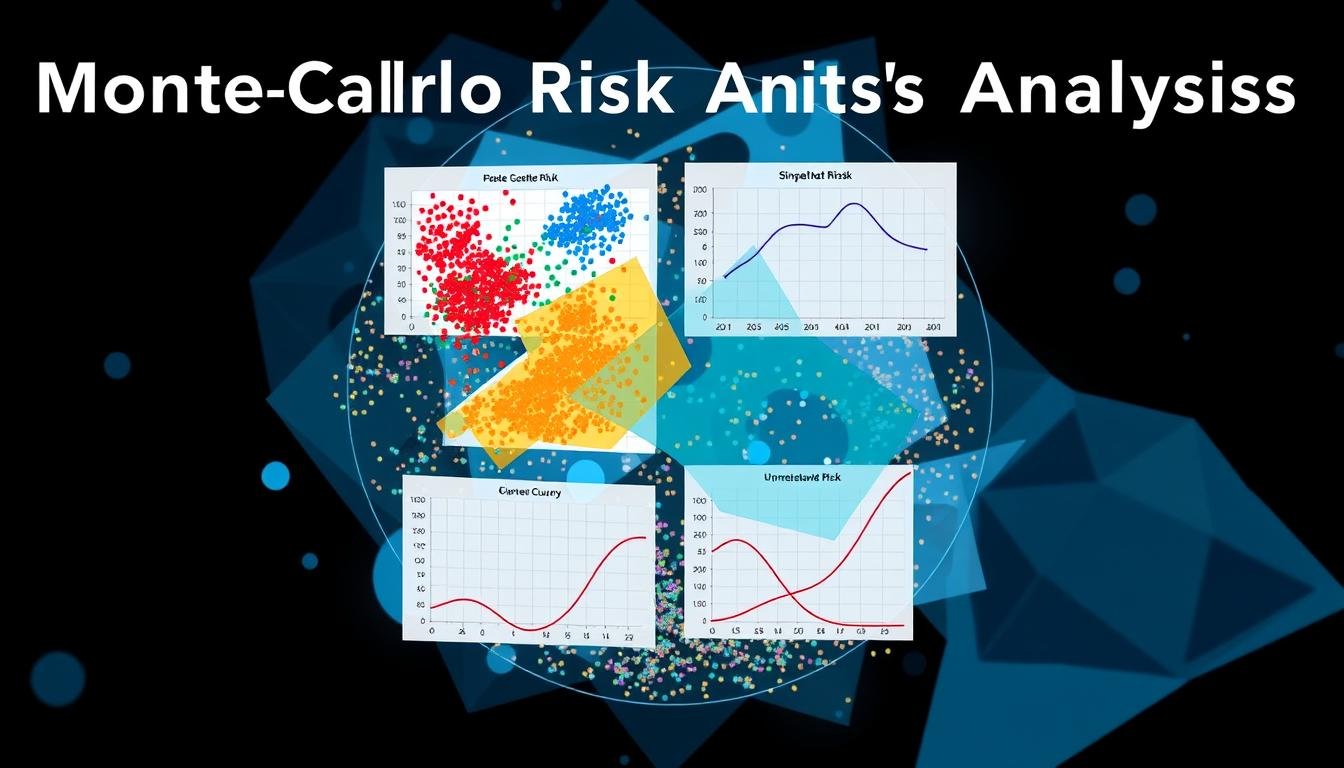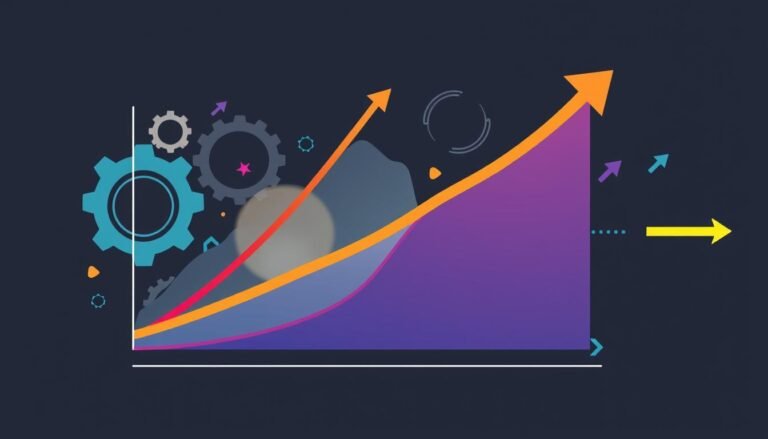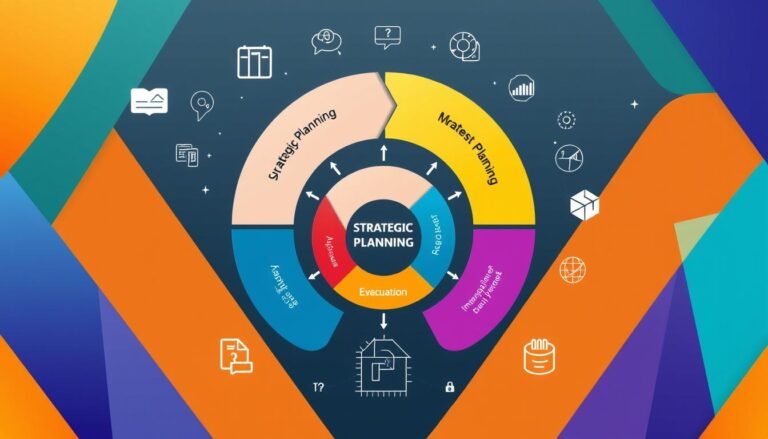Understanding Monte Carlo Risk Analysis
Have you ever thought about how experts in finance, engineering, and project management handle uncertainty? The answer is Monte Carlo Risk Analysis, a method that turns uncertainty into clear insights. It uses simulations to look at possible risks and outcomes in different scenarios. This makes it key for those who want to make smart decisions.
As businesses face more risks, knowing about Monte Carlo Risk Analysis is vital. It helps with quantitative risk analysis and improving risk assessment strategies. We’ll look into what Monte Carlo Risk Analysis is, why it matters, and how it works. This will give you the knowledge to use probabilistic modeling well.
Key Takeaways
- Monte Carlo Risk Analysis uses complex models to handle uncertainty in various fields.
- This method creates a range of possible outcomes through many simulations.
- It helps professionals show and explain risks to others clearly.
- Financial experts and portfolio managers use Monte Carlo simulations to manage risk and improve portfolio performance.
- The technique boosts risk assessment strategies, helping organizations make decisions based on data.
What is Monte Carlo Risk Analysis?
Monte Carlo Risk Analysis is a way to look at complex systems by using random samples and statistical models. It helps us understand uncertain variables well. Many industries use it for managing risks effectively.
Definition and Overview
This method uses simulations to guess how complex processes might turn out. By looking at many scenarios, it shows us possible outcomes and their chances. Companies like those in construction, pharmaceuticals, and IT use it to check risks, make better decisions, and talk clearly with others.
It helps with guessing costs and finding risks that could delay projects.
The History of Monte Carlo Methods
The story of Monte Carlo methods started during the Manhattan Project. Stanislaw Ulam and John Von Neumann first used these methods for nuclear physics problems. Now, it helps with risk analysis in many areas, like finance and weather forecasting.
| Aspect | Details |
|---|---|
| Purpose | Evaluate risks, simulate scenarios, estimate outcomes. |
| Key Developers | Stanislaw Ulam, John Von Neumann. |
| Applications | Construction, pharmaceuticals, IT systems, finance. |
| Benefits | Improved decision-making, better risk assessments, enhanced estimation accuracy. |
| Limitations | Requires large data sets, simplistic assumptions, model dependency. |
Purpose of Monte Carlo Risk Analysis
Monte Carlo Risk Analysis helps project managers understand risks and uncertainties better. It lets them see different scenarios, which helps in assessing risks. By simulating outcomes with various variables, stakeholders can plan their risk management better.
Assessing Project Risks and Uncertainties
The 2008-2009 financial crisis showed how crucial risk assessment is. Monte Carlo methods help managers spot potential dangers. They offer a statistical view that guides their strategies.
By running thousands of simulations, these analyses show the level of uncertainty. This helps teams understand and manage risks better.
Evaluating Decision-Making under Uncertainty
Using Monte Carlo simulations makes decision-making under uncertainty better. Companies often make choices based on biases, like overvaluing recent losses. Simulation software helps by running many scenarios.
This builds a strong framework for decisions. Choosing the right probability distributions is key. It depends on the industry needs. This approach improves decision-making in a complex risk and uncertainty environment.
Importance of Monte Carlo Risk Analysis
Monte Carlo Risk Analysis is key in many industries. It helps make better project management decisions and improve risk assessment. By simulating different outcomes, it helps managers handle risks well.
Informing Project Management Decisions
Good project management means understanding and measuring risks. Monte Carlo simulations help by looking at many possible scenarios. They run through thousands of iterations to give valuable insights.
This helps in making smart project decisions. By looking at risks through simulations, companies can focus on the most important actions. They can plan for the worst-case scenarios.
Enhancing Risk Assessment Strategies
Monte Carlo Risk Analysis makes risk assessment better by giving likely outcomes. This helps understand the possible effects of different choices. For example, businesses use it to see how economic changes might affect them.
With this analysis, companies can deal with uncertainty well. They turn challenges into chances for growth.
| Feature | Monte Carlo Simulation | Traditional Analysis |
|---|---|---|
| Outcome Representation | Probabilistic results with diverse scenarios | Single outcome based on fixed parameters |
| Iterations | Runs tens of thousands of iterations | Limited or no iterations performed |
| Risk Management | Facilitates proactive risk management techniques | Reactively assesses risks after they occur |
| Decision-Making Quality | Informed decisions backed by analytics | Decisions made on assumptions and estimates |
| Application Fields | Widely used in finance, project management, etc. | Mostly used in simpler analyses |
Using Monte Carlo Risk Analysis in projects helps understand uncertainty better. This approach leads to better planning and risk management. It supports the success of projects despite the unknown.
How Monte Carlo Risk Analysis Works
Monte Carlo Risk Analysis starts with a clear problem definition and goals. Next, it identifies key variables like costs, durations, and risks with their probabilities. This step is key for building a reliable Monte Carlo simulation model.
Steps in Conducting a Monte Carlo Simulation
The process includes modeling uncertainties, sampling probabilities, and analyzing results. It runs many iterations, often tens of thousands, through random sampling. In each iteration, it picks random values from defined probabilities, creating thousands to millions of outcomes.
This gives a clear view of how risk affects financial forecasts or project decisions.
Random Sampling and Statistical Modeling
Random sampling and statistical modeling are crucial in Monte Carlo simulations. They help capture the unpredictability of events. By using statistics, the analysis shows not just outcomes but also their chances of happening. This helps understand possible risks.
However, large simulations can be time-consuming and require a lot of resources. But, tools like Excel and Google Sheets make it easier for companies to do what-if analyses. This lets them see the effects of different scenarios quickly.
Source Links
- How to Use Monte Carlo Analysis to Estimate Risk
- What is Monte Carlo Simulation? | Lumivero
- Understanding the Monte Carlo Analysis in Project Management – Project Management Academy Resources
- Monte Carlo Simulation: What It Is, How It Works, History, 4 Key Steps
- Tutorial: Risk Analysis and Monte Carlo Simulation
- Expect the unexpected: Risk assessment using Monte Carlo simulations
- GBTEC Software AG
- Monte Carlo Simulation and Risk Management: An Easy Explanation – IRM India Affiliate
- Monte Carlo Simulation Provides Insights to Manage Risks – ERMA | Enterprise Risk Management Academy
- Power of Monte Carlo Simulation in Risk Analysis







